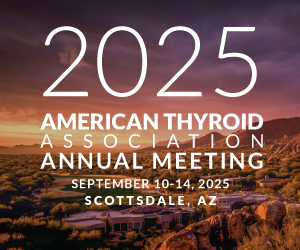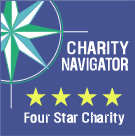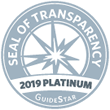 Presented by James A. Fagin, MD
Presented by James A. Fagin, MD
American Thyroid Association
ATA Membership and Business Meeting
Quebec City Convention Centre – 206AB
Thursday, September 20, 2012
I would first like to thank the membership for giving me the privilege of serving as the ATA President the past year. I was fortunate to have followed Greg Brent in this position, as I benefited enormously from his perspective and deep knowledge of the history of the organization. Although each year the ATA faces new challenges, many of the issues before the leadership recur, and Greg’s institutional memory was invaluable to me, and I am sure to John Morris as well. Bobbi Smith, of course, has an intimate and detailed understanding of all that concerns the ATA, and her wisdom continues to help chart the course of the organization. Serving with our new Secretary and COO John Morris has been a real treat. He is tremendously dedicated, thoughtful and detail-oriented, and has the perfect temperament for the job. Perhaps it has something to do with the aircraft pilot phenotype… all those checklists and quality controls. Anyway, I would be happy to be his passenger any time, as there is an excellent chance that he will find the runway and land safely.
I could not possible summarize all the developments of the past year, and I think John will try and be more comprehensive in his report. Instead, I would like to focus on a few of the priorities that emerged from our strategic planning process. As most of you know, in March of this year a task force of ATA members met in Washington DC to consider the future of the organization. The meeting was facilitated by Morna Conway, a consultant we engaged to help us with this process. In addition to her experience in helping non-profit medical organizations with their strategic planning, we were particularly keen to gain from Morna’s background in academic publishing, and on how medical societies interact with their publishers. The strategic planning document has been sent to all members, and we hope you that you will have a chance to look at it and send us comments. Recall that strategic planning is most successful when the objectives and the tactics to achieve them are continually updated and revised, so that it serves as a living guide of the direction of the society.
Our membership has diverse interests and backgrounds, and yet we communicate with them in a relatively undifferentiated way. An important new priority for the ATA will be to improve our understanding of our member’s interests, so that we can serve them better, and communicate more effectively. The ATA staff will be collecting current information on the demographics and primary professional activities of the membership. We hope that this relatively simple step, among others, will allow us to better tailor our outreach efforts, and also help identify people who can participate in ATA committees. We are pretty sure that there is a lot of untapped talent out there!
One key demographic that appears to be dwindling is that of our basic, and to a lesser extent, translational research scientists. This may be due in part to a decrease in funding in certain areas of basic thyroidology, and to the fact that many prefer to attend meetings focused on their specific topics. This is a loss for us, and we believe for them as well. The outcome of this is that our Annual Meeting, if the trend continues, could be impoverished, and opportunities to make significant advances for our patients will diminish. Two weeks ago I attended the ETA meeting in Pisa, and I was pleasantly surprised by the quality and diversity of the work presented there on thyroid developmental biology, cancer cell biology, thyroid hormone metabolism and thyroid hormone action. We also have outstanding research groups in the US that are moving these fields forward, and we need to get them back in the fold. We will be introducing a number of new initiatives to promote this, including reducing the ATA meeting registration price for basic scientists. I am believe John will have more to say about this. Recall as well that we provide substantial grant support to young investigators. Besides our usual portfolio of grants, John Morris will be talking about a large donation the ATA received recently to support research in thyroid maternofoetal medicine. Tony Bianco is chairing a committee that is developing guidelines on state of the art techniques and methods for research in thyroidology. I read an early draft of their work, and it is a real tour de force, which will make a lasting contribution to researchers working in this field. Our Strategic Plan calls for establishing a Research Affairs Task Force, which will be charged with exploring how to reinvigorate our basic science membership and their participation in the ATA. The ATA needs them, and we also believe that our Society can continue to enrich their professional lives through all stages of their careers.
Besides our annual meeting, our publications are central to the mission of the ATA. We congratulate Charles Emerson for his exceptional tenure as EIC of Thyroid. The impact factor of the journal is at an all time high, helped in part by the publication of guidelines in various aspects of clinical thyroidology that have become the international standards of excellence in clinical care of thyroid diseases, and to which many of you in the audience have contributed. We are delighted that Peter Kopp has agreed to become the next EIC. The transition has gone remarkably well, and Peter is beginning to impart his own vision for the journal, and I am confident that he will take it to even greater heights.
During the strategic planning process, there was considerable discussion about how we can expand and further profit from our publication enterprise. ATA members provide exceptional expertise, time and content to our guidelines, position statements, as well as to our freely distributed journals. Jerry Hershman and his terrific team of Associate Editors have made Clinical Thyroidology a compelling journal to follow. I am sure I speak for many that find their summaries and discussions of papers enlightening and helpful. Clinical Thyroidology for Patients, ably edited by Alan Farwell, covers the same material, but in lay language so that it can be understood by patients with the disease. The time that Alan and each of his committee members take to make these papers accessible and useful to the general public is truly commendable. There is a growing consensus that these and other possible publication ventures offer opportunities that we should be exploiting. We are considering having a more professionalized Publications Committee, supported by our consultant Morna Conway, to explore these options.
I would like to thank all the committee chairs for their selfless effort on behalf of the ATA. I cannot mention them all, so please forgive me for not acknowledging all that you do. I do want to give my personal thanks to Elizabeth Pearce and Douglas Forrest for their hard work leading the Program Committee, and for putting together such a superb meeting.
As you know, Greg Brent completes his term as Past-President at this meeting. He has served the ATA in so many ways and different capacities that any acknowledgement is insufficient reward for all he has done. The good news for him is that he will gain quite a few extra hours a month. The bad news for us is that we will not be able to count on his advice and perspective on a regular basis. To John Morris, thank you again for a great year. I would like to acknowledge Bobbi Smith once again, for adapting so well to the new realities that non-profit medical societies like ours have to face, for her timely selection of consultants and advisors to help further our mission, and for giving me and the rest of the board much sound advice and support. The ATA staff she leads is simply outstanding: Adonia Coates, Kelly Hoff, Sharleene Cano and Shirlyn Barger, thank you all. In closing, I am delighted that Bryan Haugen will be taking on the ATA Presidency, he is a wonderful choice and I am confident that he will be a terrific leader.






